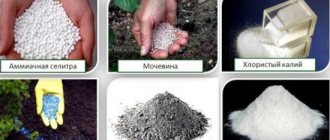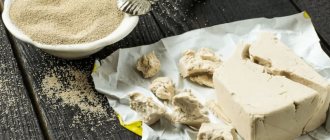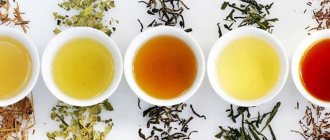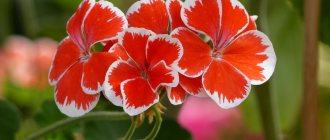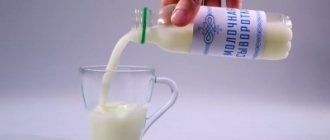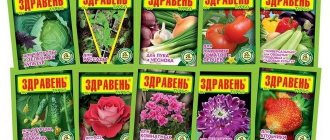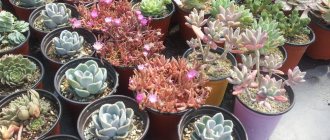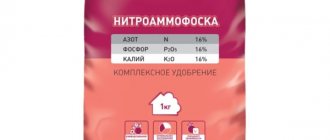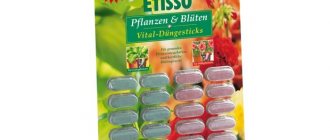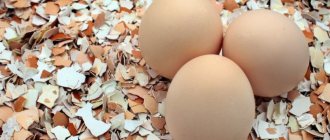Phosphorus fertilizers should not be underestimated. Phosphorus is considered an essential nutrient, along with nitrogen and potassium. Participates in photosynthesis, respiration, storage and transfer of energy and many other processes in plants. Phosphorus fertilizers are indispensable helpers for any gardener, but not many know which fertilizers are better. The names are so different, each type has its own characteristics. Before using any fertilizer, it is important to know how it affects the plant and its benefits for growth.
The role of phosphorus fertilizers in plant development
Phosphorus controls constant metabolic processes and is part of DNA and RNA. Significantly increases drought and frost resistance of plants. Young, intensively growing seedlings especially need phosphorus.
Phosphorus starvation. It manifests itself in a change in leaf color to purple, bronze and a delay in flowering and ripening.
Deadlines for submission. Phosphorus fertilizers, including water-soluble ones, are not washed out of the soil. They are embedded closer to the roots, applied for digging in the fall or spring: sparingly soluble phosphorus fertilizers (phosphate rock) are applied in the fall, superphosphates - in the spring.
The importance of phosphorus for plants
Phosphorus is essential for plant nutrition. It takes an active part in most metabolic processes - energy, metabolic, reproduction and division. Without it, the processes of respiration, photosynthesis, and fermentation are impossible. Helps regulate the permeability of cell membranes.
Phosphorus is especially needed for fruits and flowers , such as decorative flowers such as violets. It accelerates their formation and improves the decorative qualities of plants.
The root system ensures good branching and proper growth, as a result of which the plant acquires all the necessary substances in sufficient quantities. Increases cold resistance and provides resistance to lodging.
Popular phosphorus-containing fertilizers
Superphosphate
The most popular phosphorus fertilizer is double superphosphate; it is most often used in the garden. Simple and double superphosphate differ from each other not only in phosphorus concentration: simple superphosphate (16–22%), double (up to 45%). In addition, double superphosphate also contains about 15% nitrogen compounds and 6% sulfur, and, unlike simple superphosphate, it does not contain gypsum. Both are suitable for use in all areas and for any crops: flowers, vegetables, trees.
Bone meal, or phosphonitrogen
Natural fertilizer (contains 15–35% phosphorus) – a product of bone processing. In addition to phosphorus, bone meal contains calcium, biologically active substances and trace elements (magnesium, sodium, iron, copper, zinc, manganese, cobalt, iodine). Serves as a comprehensive fertilizer for vegetables (tomatoes, peppers, cucumbers) and flowers. Indoor crops - palm trees, vines, ficus - respond especially well to bone meal. In its properties, bone meal occupies an intermediate position between superphosphate and phosphate rock. Completely decomposes in the ground in 5–8 months.
Phosphorite flour
Slightly soluble phosphorus fertilizer (phosphorus - no less than 20%, calcium - no less than 34.8%) with a very long-lasting effect when applied in high doses before planting (from 100–200 to 500 g per 1 m2). They are used only for autumn digging on acidic soils or for preparing acidic composts - manure and peat: in an acidic environment, phosphorus gradually transforms into a form accessible to plants. Do not use on soils with neutral and alkaline reactions. Phosphorite flour cannot be mixed with lime fertilizers and ash; it can be mixed with ammonium sulfate, ammonium nitrate, potassium chloride and simple superphosphate.
Reviews
Maksim:
“Without phosphorus fertilizer, potatoes grow slower. I use bone meal so that the culture has enough for normal development.”
We grew tomatoes without phosphorus fertilizer for two years. But over time, we noticed that the fruits did not develop as needed for the variety. I applied the fertilizer the next year and there were no problems. I was pleased with the result. Finally I found a unique fertilizer that I will use constantly.
Andrey:
“I use superphosphate. The main thing is to correctly calculate the dose and not overdo it using the product under the bush. I decided to fertilize potatoes with it after the effectiveness was noticeable on other crops.”
Pauline:
“For me, phosphorus fertilizer is a real salvation. The soil on our site is far from the best, so we can’t do without fertilizer to get a good harvest.”
Source
Basic complex fertilizers with phosphorus
Double nitrogen-phosphorus fertilizers:
Ammophos: a complex water-soluble phosphorus-nitrogen fertilizer (phosphorus - 50%, nitrogen - 12%), where both elements are contained in an easily digestible form. Nitroammophos: nitrogen-phosphorus fertilizer (phosphorus - 11-24% and nitrogen - 16-23%), suitable for use on soils with normal or high potassium content.
Diammophos (ammonium hydrogen phosphate, diammonium phosphate) Phosphorus-nitrogen fertilizer (phosphorus - 46-50%, nitrogen - 18%). Diammophos reduces soil acidity and is used as a pre-sowing fertilizer for most vegetable crops.
Double phosphorus-potassium fertilizers:
potassium phosphate.
Triple complex fertilizers: ammophoska and nitrophoska, magnesium ammonium phosphate.
Azofoska (nitroammofoska) Complex nitrogen-phosphorus-potassium fertilizer (the content of nitrogen, phosphorus and potassium is approximately equal) is one of the most effective mineral fertilizers, where phosphorus is in a water-soluble form. Nitroammofoska can be used as a universal fertilizer on any type of soil. It is used for pre-sowing and planting application, as well as for fertilizing.
The benefits of homemade fertilizers
Do I need to explain what the advantage of making organic fertilizers with your own hands is? The benefits are simply enormous:
- First of all, it is environmentally friendly. There is no chemicals in this feeding. You will take all the components from your own site. You can treat the harvest to small children, allergy sufferers, and the benefits from it are simply enormous;
- saving money, since for our recipes we used only those components that are available at each site;
- Fertilizers prepared by yourself are always fresh, you independently monitor the quality and proportions. At any time, you can prepare the required amount of fertilizer for all plantings in 1-1.5 weeks.
Related article:
Mobile composters : what they are, types of devices, operating principles, review of popular models, tips and recommendations from experts - read the publication.
Features of fertilizing with phosphorus fertilizers for vegetable, fruit and flower crops
Tomatoes . When planting, 15 g of simple superphosphate is added to the hole. If no fertilizer was applied during planting, then during flowering you can apply liquid fertilizing: 100 g of simple superphosphate per 10 liters of warm water. Watering at the rate of 0.5 liters per bush. Or add half a teaspoon of azofoska to one hole when planting seedlings of tomatoes, peppers and eggplants.
Apple tree . For a young apple tree (up to 4 years old), 70 g of double superphosphate is added to the tree trunk in the fall; for an adult apple tree (5–10 years old), 100–200 g of double superphosphate. In case of phosphorus starvation, trees can be sprayed with a solution of superphosphate (50 g per 10 liters of water).
Raspberries . In the fall, add 15–20 g of double superphosphate or 40 g of simple superphosphate per 1 m2 of plantation. Leaf feeding (raspberries, currants, gooseberries) is useful using nitroammophoska: 20 g per 10 liters of water.
Grape . Phosphorus is necessary during flowering and for ripening berries. However, a lack of phosphorus is a rather rare phenomenon: it manifests itself in the fact that grape leaves become small and flaccid; with a severe deficiency, they curl into a tube, the berries crumble and the clusters become loose. Therefore, the first fertilizing with phosphorus-containing fertilizer is done at the beginning of the flowering phase, the second - in mid-summer. For feeding, make a solution of 15 g of ammonium nitrate and 25 g of superphosphate per 10 liters of water.
Decorative perennials. In the fall, for digging, add the following to the flower garden per 1 m2: ammophos - 15–25 g or diammophos - 20 g.
Indoor flowers. When transplanting, add 0.3 teaspoon of bone meal per 1 liter of fresh soil.
Miracle fertilizer from nettles
We gave the first place in our recipes to nettles, and both fresh and dried leaves are suitable. The main thing is that there are no seeds in it. This is an excellent natural growth stimulator; it strengthens and has a healing effect on plants and destroys pests. The recipe for making fertilizer is completely simple.
- Place 1 kg of greens or dry grass at the bottom of a large plastic container.
- Fill the grass with 6-8 liters of settled, or preferably rain, water.
- Leave the mixture in the sun to infuse for 6-10 days. During fermentation, an unpleasant odor may appear, so it is better to immediately place the container away from the residential building. The composition must be stirred daily.
- The fermentation process will begin, the mass will increase in volume.
- To water plants at the root, dilute the infusion with water in a ratio of 1 to 9. For spraying, you will need a less concentrated composition: add 19 parts of water to 1 part of the solution.
Important! Fertilizing with nettles can be done no more than 1-2 times a month.
PHOTO: udobryashkin.ru The fermentation process must take place in the bucket
How to properly fertilize indoor plants?
General regime for feeding indoor plants:
- from the beginning of March to the end of October, feed every 2 weeks;
- from November to January - most plants are at rest, so fertilizers (for different types of plants) are either not applied at all or the dosage is reduced by half.
- The plants are not fed for a month after transplanting into fresh soil.
If plants do not have a feeding regime, they themselves signal a lack of nutrition. Growth slows down, the lower leaves turn yellow or chlorosis appears on young leaves, flowering is absent or sparse, sometimes leaves fall off and petioles become elongated.
Manufacturers produce mineral fertilizers for indoor plants in several forms:
- liquid - ease and accuracy of dilution, emergency replenishment of the necessary elements;
- water-soluble (powdery) - economical use;
- solid (tablets, rods, plates) - long-lasting, suitable for plants that are rarely replanted.
In home floriculture, bulk granular fertilizers are not used, since their dosage is calculated per 1 square meter. meter, even a few granules can cause burns to the roots.
Attention! Garden fertilizers cannot be used in home gardening. They are more concentrated, and it is difficult to dilute them correctly into a small volume; the instructions do not even contain such recommendations. Exceeding the dose of fertilizer will lead to burns of the roots or salinization of the soil.
It is important to remember that the need for organic and mineral substances varies greatly among different plant species . If you feed all indoor flowers the same way, some of them will actively bloom and turn green, while others will simply die. It is especially easy to destroy cacti and succulents by overfertilizing. Therefore, we highly recommend reading practical recommendations on flower growing forums on how to properly care for specific plants that grow in your area. Well, the rule “it is better to feed little by little, but regularly, than rarely and with a full dose” works for any plants.
Let's look at the composition and features of using fertilizers for indoor plants, which are most often recommended on gardening forums.
Causes and signs of phosphorus deficiency
Plant crops react extremely hard to an insufficient concentration of a microelement in the soil, because all metabolic processes are disrupted in them. On the appearance of plants, deficiency of the element is manifested by the following signs:
- all parts of the plantings are first painted a bright green shade, then purple (crimson);
- deformation of the leaves and their premature falling off are observed;
- the leaf plates of the lower row undergo necrotic changes, dark spots form;
- plant growth slows down;
- rhizome development is inhibited;
- the retaining part of the root dies off, and the plantings often fall.
All these formidable signs require fertilizing the land with nutritional compounds. Phosphorus starvation in plants occurs as a result of various negative reasons. Most common:
- heavy earth with clay;
- oversaturation of soil with potassium;
- increased soil moisture;
- lack of beneficial microflora.
Phosphorus-containing fertilizers should be applied after the true cause of the element’s deficiency has been established.
Eggshell
Eggshells contain 95% calcium carbonate, which is beneficial for crop growth. In addition, it contains a whole storehouse of vitamins. You can put crushed substance in each hole; it will not only enrich and strengthen the plants, but also protect them from pests. Few summer residents know that a healthy infusion can be made from egg shells. Its recipe is quite simple.
- Soak the crushed shells in three liters of warm water.
- Close the container with a lid and place in a dark place for three days.
- The liquid will become cloudy and begin to emit an unpleasant odor of hydrogen sulfide.
- Water the plants at the roots with infusion.
Egg shells are used to feed not only seedlings, but also adult plants.
PHOTO: navoz911.ru You can simply scatter the shells on the beds and dig in a little
Wood ash
We give second place to wood ash. Summer residents love to treat all their beds with it. It contains trace elements and vitamins, which will be much more beneficial if you make liquid fertilizer using the right recipe. In addition, this is an excellent remedy for combating late blight. Recipe for making fertilizer from wood ash.
- Dilute 150 g of ash in 10 liters of settled water.
- Stir quickly and leave for a quarter of an hour.
- The composition can be used for watering absolutely all crops in a summer cottage. For tomatoes, peppers and cucumbers, pour 500 ml under the bush. For each tree you will need at least 1 bucket.
Advice! Ash can be collected after barbecuing or burning tree trimmings.
PHOTO: dacha.help The ash solution must be mixed well before feeding
Universal fertilizer – rotten grass
Mown grass will not only feed all plants, but will also protect the soil from drying out during the hot period. This is an excellent remedy that you don’t even have to prepare, just spread the grass on the beds, under trees and bushes. The bacteria that live in the rotten mass will help crops cope with many diseases. Compost can be made from grass clippings, but it will be ready in 1-2 years. Another option is an infusion; its preparation is similar to that of nettles. The only condition is that it cannot be stored; it must be used within a week after fermentation.
Advice! Professionals advise the last planting of grass to be done in the fall; it will become an additional insulation for the plants.
